|
|
Advertisement:
|
|
Inexpensive Greener File-Server Guide |
|
Join the community - in the OCAU Forums!
|
Gigabyte GA-D525TUD, Addonics HPMSXA & WD HDDs
Gigabyte GA-D525TUD Review
I am sure most of you out there have heard of Gigabyte. If you havenít, they are a major producer of motherboards suited to all uses, from entry level to the hard core gaming level. The Gigabyte GA-D525TUD is an Atom based dual core motherboard. This board is fairly cheap coming in at around $120 and is well suited for a NAS/file server that is on 24 hours a day.
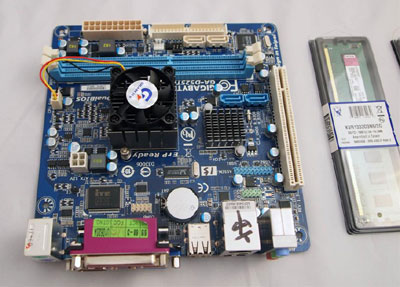
The sample board I am using is marked Rev 1.0. The GA-D525TUD really packs a lot into a small space. I canít find anything wrong with the layout of the motherboard. I am also happy to see the solid state capacitors being used. With the Fractal Design case I had no issues or clashes when installing the motherboard.
The board supports two DDR3 modules but only runs them at 800 MHz. As you can see the memory modules are almost the size of the board itself. I found DDR3 a strange choice especially due to the 800 MHz limit and that the Intel chipset can support DDR2. The board also supports a single PCI slot, this works in my favour but I do find it strange that it isnít a PCI-ex 4x. The board also sports a 25mm CPU fan. I've found 25mm fans in general have a tendency to become noisy after a year or two but Gigabyte have used a standard fan pin header which makes replacement easy if needed.
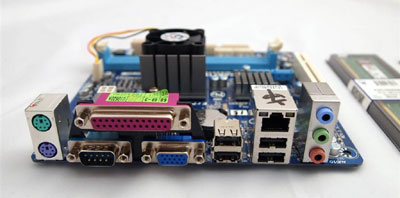
The rear I/O panel has 4 USB ports, 1 PS/2 Keyboard port, 1 PS/2 Mouse, 1 Serial, 1 Parallel, 1 VGA, 1 Gigabit LAN and the standard audio out, aux and mic. I relish the opportunity to finally plug my UPS into the motherboard via the serial port but I did wonder if the serial and parallel ports were there just to fill up the back panel. There really are a tremendous number of outputs for such a tiny board. The onboard graphics is also perfect for a NAS file server.
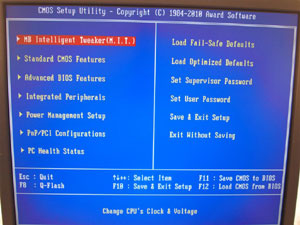
The board is using the F3 version of Phoenix / Award BIOS. As you would expect there isnít much in the way of customisation in this bios.
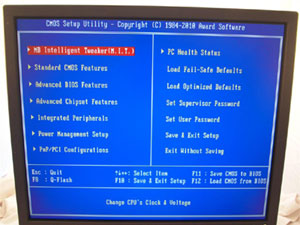
As with most Gigabyte BIOSís CTRL + F1 at the main BIOS menu will enable the hidden features and properties. In this case it will only unhide the Advanced Chipset Features and that contains nothing useful.
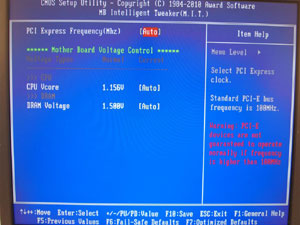
The Motherboard Intelligent Tweaker allows you to modify the voltage on the CPU and RAM but personally I donít feel any need to do that with a board like this. To see testing and results please see the "PC Build" section of this review.
Gigabyte has created a board that is small, functional and robust. The Atom based motherboard uses a maximum of 25Watts which is extraordinary when you think it is faster than a P4 3.4 GHz which uses about 140Watts. Gigabyte seems to have the only available motherboard (in Australia) with the 1.8Ghz D525 processor. While I question some of the decisions like DDR3 and PCI, I could not really fault this board: it has taken everything I can throw at it without a single hiccup. I donít believe I could find a more suitable motherboard for this project.
Addonics 5 Port SATA Multiplier System Version HPMSXA
Addonics have been around since the late 1990ís. Their business is innovative storage products and solutions. The AD5HPMSXA certainly fits that mould. It's a SATA multiplier and without getting into too much detail it allows one SATA cable connected to your motherboard to control five SATA drives. In addition to this awesome feat it also does RAID 1, 0, 10, 3, 5, JBOD and individual drives. This device fits into a standard rear slot cover space in a case, but doesnít actually connect to the motherboard. It's a bit tight but itís a perfect fit for the Fractal Design case and a necessary addition to the Gigabyte motherboard to allow use of all the drive bays in the case. It costs about $130 but it is one of the only low end raid cards that support 2TB and larger drives. Here are the specifications from the Addonics website
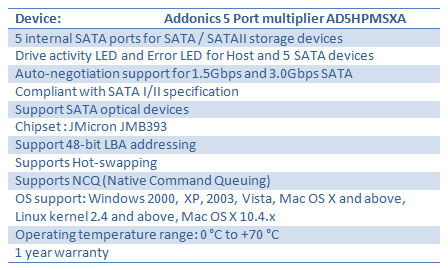
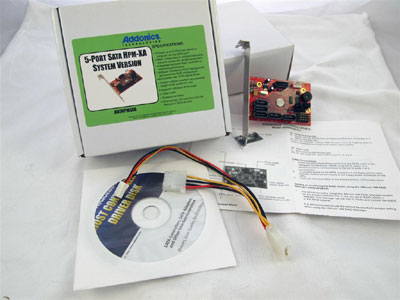
The kit comes with an instruction sheet, driver disk, molex to floppy disk power adapter and a low profile bracket if needed.
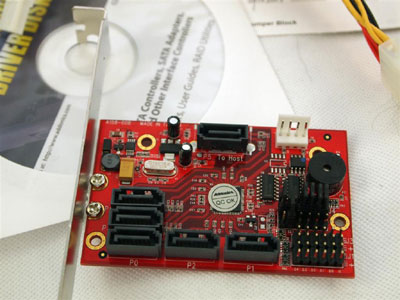
The SATA port on the top of the device runs back to the motherboard, while the other five run to the hard disk drives. Each drive has an activity light and error light pin header which really could come in useful if you could source some LEDs and figure out a way to display them on the front of the case. You can also see the floppy power header that powers this device. The jumper bay on the right hand side is what configures the RAID function. It is best to just leave the jumpers alone and wait to install the software in Windows to configure the array. Please before you plug the drives in make sure you donít need any content on the drive, because it has a tendency to reinitialise and remove all data on the drives during initial boot.
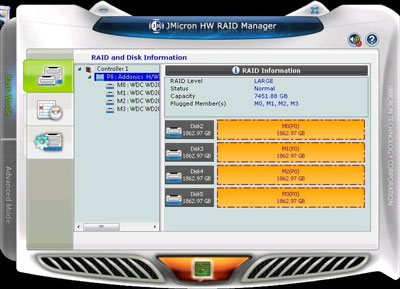
The biggest issue here was finding the correct RAID software; Addonics have loaded every raid driver and software known to man on the disk. It is far easier to just go to Addonics website and source the RAID software directly. To see testing and results please see the "PC Build" section of this review.
Addonics have created a product here that fills a need that nothing else fills. Without this multiplier I would be stuck with four non RAID drives. Sure it may hamper single disk IO a bit but how often do you exceed the need for 60 MB/s write and 120MB/s read. I still canít believe how well this device operates, and not to mention how easy it is to install.
2TB Western Digital Green drive WD20EARS
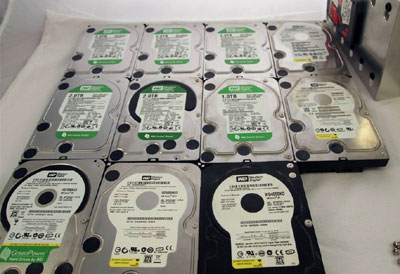
Unfortunately due to a marketing department error in Sydney, the drives I was planning on reviewing never arrived. So I either purchased new or reused pre-existing drives. So please excuse the lack of tests as I was juggling pre-existing data around during the test.
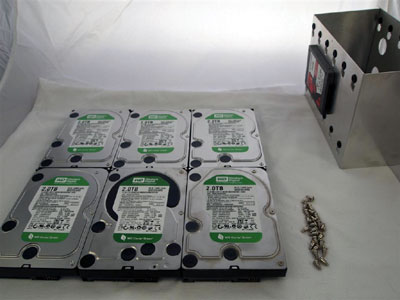
Western Digital has been around for 40 years. They are a leader in the development of hard drives for various uses. The WD20EARS is a drive targeted at the low cost and / or green consumer. At $120 each they cost about 6 cents a gigabyte which is hard to pass up. Unlike popular belief the green drives do not operate on just 5400RPM but they utilise ďintelipowerĒ, allowing the drive to boost up to 7200RPM when in high demand and then drop back to 5400 when itís not being used.
These drives have performed admirably. The small power usage made these drives a good option for this type of project. I didnít notice any large spikes in temperature, noticeable noise increase or large power draws. I will continue to buy and recommend Western Digital Drives for their reliability and ingenuity.
|
|
Advertisement:
All original content copyright James Rolfe.
All rights reserved. No reproduction allowed without written permission.
Interested in advertising on OCAU? Contact us for info.
|

|


